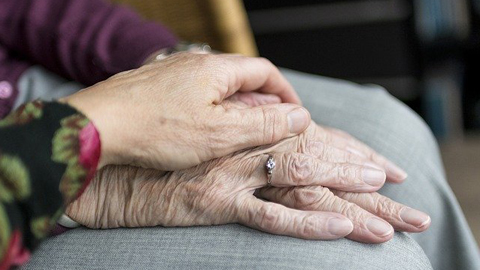Age and family structure affect vulnerability to COVID-19

The UAB Centre for Demographic Studies (CED) has published a study verifying that vulnerability to COVID-19 in the Spanish provinces is due to the larger or smaller proportion of younger and older people, and to cohabitation patterns. Although only 14% of the population under 65 lives with the elderly, these could transmit more than half of the contagions occuring within the home, which should be taken into account when gradually lifting the lockdown.
14/04/2020
Oneof the study's main discoveries is that although only 14% of the population aged under 65 lives with the elderly, these could transmit more than half of the contagions occuring within the home, which should be taken into account not only when taking precautions at home, but also when gradually lifting the lockdown.
Researchers from the Centre for Demographic Studies at the Universitat Autònoma de Barcelona (UAB) Albert Esteve, Iñaki Permanyer and Diederik Boertien published on 14 April a study examining the demographic structure - a greater or lower proportion of younger or older people - and cohabitation patterns, like the size and age structure of homes, and how they condition COVID-19 vulnerability in Spanish provinces. The study was recently published in the journal Perspectives Demogràfiques.
Both of these factors turn out to be determining in order to understand the differential mortality which could arise in provinces given the same percentage of infected people. Due to the population structure, the oldest provinces in Spain (Zamora, Lugo, Ourense, Salamanca) suffer double the mortality rates per 100,000 inhabitants than younger provinces (Ceuta and Melilla, Almeria, Las Palmas). Madrid and Barcelona present similar values. Over 80% of those who die are aged 65 or more.
To quantify and compare vulnerability to COVID-19, researchers simulated the mortality per 100,000 inhabitants which would be observed if 10% of the population living in private homes were infected with the virus. To do so, they used official data from the Resident Register.
The study also quantified mortality rates cuased by contagion within the home. In all provinces, contagions within the home could generate more deaths than outside the homes if all people living together are infected. Also in this case, over 75% of the people dying would be aged over 65. The most elderly population would be the most vulnerable to contagions occuring within the home, but two-thirds of these infections would be transmitted by people under 65.
In the case of Ceuta and Melilla, 80% of deaths produced by contagion within the home would be transmitted by people under 65, while in Zamora this percentage would be 50%. For Spain as a whole and the provinces of Madrid and Barcelona, the percentage would reach 65%. The young and working age population have lower probabilities of dying from this pandemic, but play an important role in transmitting the virus within the homes.
Researchers argue that when taking measures to mitigate the adverse effects of COVID-19, epidemiologists and politics should take into account the age structure and cohabitation patterns affecting the population's vulnerability to the virus. In addition to ages, the (de)confinement strategies and epidemiological models ought to give more importance to demographic and household data particularly to avoid the transmission of the virus to the elderly. Aspects such as density within and away from home must also be studied, researchers affirm.
Original article:
"La vulnerabilitat de les províncies espanyoles a l'covid-19 segons la seva estructura per edat i de co-residència: implicacions per al (des) confinament" - Albert Esteve, Iñaki Permanyer, Diederik Boertien. Perspetives Demogràfiques, April 2020.